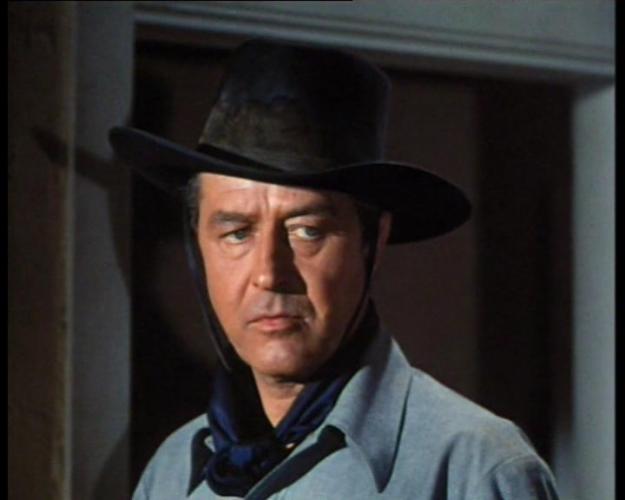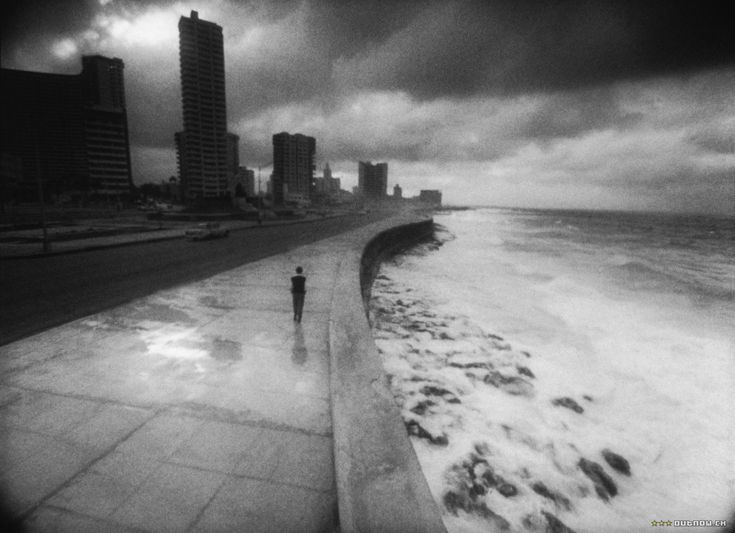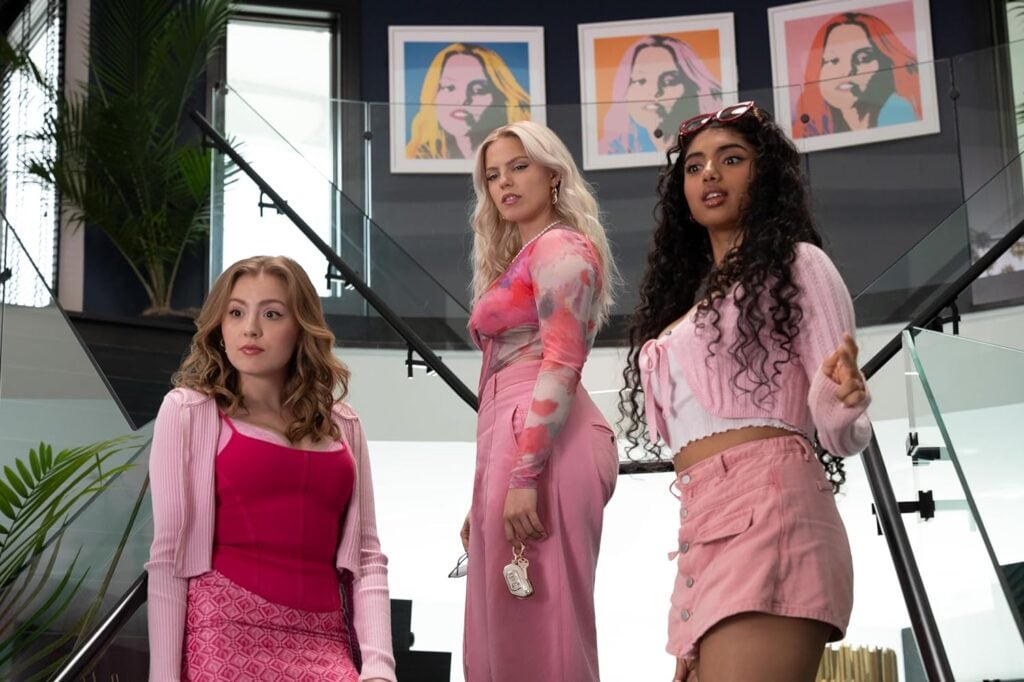A Man Alone is a late Republic Pictures western notable for two things; the directorial debut of actor Ray Milland and the beautiful color photography by the underrated Lionel Lindon. Milland was attached to the project and was shopping it around Hollywood before it landed at Republic. Because of this the movie takes more chances than the typical Republic western.
The Production: 4/5
A Man Alone is the story of stranger Wes Steele (Milland), a presumed amoral hired gun (or is he?) who stumbles into a town that seems to be on the edge of nowhere and is more corrupt than even what a hired gun is used to encountering. The most interesting element of the script is the film’s morality and not its plot or characterizations. In some ways it fits in with the era’s Mann/Stewart and Boetticher/Scott westerns and like those movies anticipates the revisionist westerns of the 1960s.
The film opens with Steele riding his horse through a desert sandstorm. The horse is injured in a fall and has to be put down. Steele continues on foot where he discovers a stagecoach that has been robbed and everyone at the scene, including a child, massacred. The horses are still hitched and have been left to die. Steele takes one horse and releases the remaining horses, giving them at least a chance of surviving. This is pretty grim and brutal stuff; no singing cowboys to be found around here.
Steele rides into Mesa, the nearest town but is beaten by one of the released horses. This tips off the townspeople that something is amiss, and they assume that the man riding one of the other horses is responsible for whatever happened to the stagecoach. Upon entering town, Steele is greeted from behind by the cocking of the deputy’s six shooter. Steele wounds the deputy and is from this point on tried, convicted and on the lam. A hanging posse forms immediately.
Steele takes refuge in what turns out to be the back room of the town bank to get out of the still raging wind storm. While hiding Steele overhears the respected town banker Stanley (Raymond Burr) discussing the stagecoach robbery with two other men – Stanley’s partner Joiner and Clanton (Lee Van Cleef, naturally). Clanton was acting on Stanley’s orders and Joiner disapproves. The three men hear something in the next room and Joiner goes to the door to investigate where he finds Steele. Joiner is murdered, and Steele is an easy fall guy.
Steele again on the run ends up in the basement of Nadine Corrigan (Mary Murphy), a woman who lives with her father (Ward Bond), who just happens to be the town sheriff and also is suffering from Yellow Fever!
The script of A Man Alone credited to John Tucker Battle, story by Mort Briskin, is functional. A protagonist without allies finds himself accused of a crime he didn’t commit and has to clear himself with the help of a doubting local woman whose trust (and love) he has to earn. The script is so functional that with a little tweaking the film could have been shot as a gangster movie, a noir, a spy/international intrigue movie, and stretching it, even as farce or a horror movie. Had it been made in India you could throw in some musical numbers.
The script is not always logical – why would someone who robbed a stagecoach and murdered everyone at the scene ride off on one of the stagecoach’s horses? Too much of the script relies on coincidence – what if Steele had ridden into another town? What are the odds of a falsely accused man ending up in a room where he hears the actual criminals discussing the crime? I bet prisons are filled with those kinds of stories!
The movie is beautifully photographed by Lionel Lindon. Lindon was prolific working both in movies (primarily Paramount Studios) and television. His work in movies included, Going My Way, The Blue Dahlia, Alias Nick Beal, a few Bob Hope pictures, and later several for director John Frankenheimer, including The Young Savages, The Manchurian Candidate, and Gran Prix. Lindon worked in black and white, 3 strip technicolor, 3D, VistaVision, and 70mm and with directors from King Vidor to Leo McCarey to John Cassavetes. A Man Alone, shot in Republic’s TruColor looks great. There is a scene in a church that is beautiful. Several scenes take place in either near darkness or deep shadows; a rarity in color films of this era.
Let us now sing the praises of Ray Milland. Milland started appearing in movies in the late 1920s usually in bland male ingenue roles including Charlie Chan in London at Fox. In the mid to late 30s Milland emerges as a dependable and popular leading man. At Paramount he appears in The Big Broadcast of 1937, Easy Living, Ebb Tide, Hotel Imperial, Beau Geste, DeMille’s Reap the Wild Wind, The Uninvited, and Lang’s Ministry of Fear. His two most important movies of this era are Billy Wilder’s The Major and the Minor and The Lost Weekend.
Milland won an Oscar for The Lost Weekend in what many considered at the time casting against type. I think it’s the other way around – Milland was really a character actor all along waiting to outgrow his conventional good looks. The Lost Weekend is the start of Milland’s transformation from romantic leading man to leading character actor that continued through the 1950s and into the 1960s and beyond.
A movie loving co-worker and I have named this period, The Cranky Ray era. A sourness seeps into the roles. He starts playing villains in movies like Hitchcock’s Dial ‘M’ for Murder and Allan Dwan’s The River’s Edge. Milland ages in front of the camera. Other than wearing toupees while still a leading man, there is little attempt to hide his age. One of the problems of A Man Alone is that director Milland miscast actor Milland. Milland and Ward Bond are approximately the same age and look it. It looks weird for Milland to be playing romantically with 25-year-old Mary Murphy. Milland should have cast a younger actor in the lead.
The strained charm of the earlier persona is turned into calculated insincerity with the villainous roles. Cranky Ray becomes a genre unto itself with movies like Panic in Year Zero! and X: The Man with X-Ray Eyes. He’s plenty cranky in those movies and you can’t get much crankier than supplying the voice of Satan in King of Kings. And the roles keep getting darker – the disapproving rich father in Love Story and the racist surgeon in The Thing with Two Heads. He pops up as a cranky villain in an episode of Columbo. He seems liberated as an actor, gleeful in his character’s nastiness. Acting in a wheelchair (a prop) in later movies like Frogs and The Attic, Milland seems to be channeling Lionel Barrymore’s Mr. Potter from It’s a Wonderful Life. He looks like he’s having a lot of fun chewing up scenery in these movies.
All in all, Milland worked as an actor for nearly 60 years! That’s incredible considering that he wasn’t a child actor like Mickey Rooney.
In the commentary Toby Roan quotes extensively from Milland’s autobiography, Wide-Eyed in Babylon. Milland was pragmatic about Show Biz. He sensed that his time as a leading man was nearing an end and moved to directing. I now have to track down a copy of the book. I can only dream of Cranky Ray in book form.
Milland’s direction of A Man Alone is simple yet assured. There’s nothing flashy – he assembled an excellent cast of character actors and hired a great cinematographer and didn’t get in their way. There’s almost no dialogue in the first reel of the movie. And even more interesting is that his character doesn’t have a line of dialogue until 28 minutes into the movie! As I wrote above, the opening is quite brutal – the violence whether onscreen or implied is amped up with more blood on screen than the average action movie from 1955.
Video: 4.5/5
3D Rating: NA
Kino has released A Man Alone on Blu Ray from a restoration performed by Paramount Pictures that included a 4K scan of the original negative and positive separations. I’m assuming that it got such lavish treatment because it was recently included in a Museum of Modern Art Republic Pictures series with titles selected by Martin Scorsese. It’s presented in 1.66:1. It looks gorgeous, almost pristine with generally beautiful colors and natural looking grain. It looks very film like with the usual problems with optical effects.
Audio: 4/5
There is no mention of whether or not an audio restoration was performed, but A Man Alone is presented in DTS-HD Master 2.0. The audio sounded great on my set up with clear dialogue and music and foley effects never getting in the way.
Special Features: 3/5
Extras are light and include:
A new audio commentary by film historian and collector Toby Roan. Roan gives a very good and detailed commentary that is relaxed and conversational. It isn’t as dense as others – Roan does pause occasionally and sticks to facts with no interpretive asides. Roan singles out just about every actor onscreen, goes into depth on both Ray Milland’s career and biography as well a brief yet informative history of Republic Pictures. Roan gives plenty of production details, including production dates.
A number of Kino trailers.
Overall: 4/5
A Man Alone is not a major film. It is a good movie with excellent photography and a few eccentric directorial touches, the kind of movie that was once the staple of late-night television. I am a fan of Milland – particularly the later, crankier Milland, yet I had never heard of A Man Alone before this release (along with it’s Milland Republic Pictures companion piece Lisbon).
https://www.amazon.com/Man-Alone-Blu-ray-Ray-Milland/dp/B07H6272QS/ref=sr_1_1?s=movies-tv&ie=UTF8&qid=1543797780&sr=1-1&keywords=a+man+alone+blu+rayPost Disclaimer
Some of our content may contain marketing links, which means we will receive a commission for purchases made via those links. In our editorial content, these affiliate links appear automatically, and our editorial teams are not influenced by our affiliate partnerships. We work with several providers (currently Skimlinks and Amazon) to manage our affiliate relationships. You can find out more about their services by visiting their sites.






Similar threads